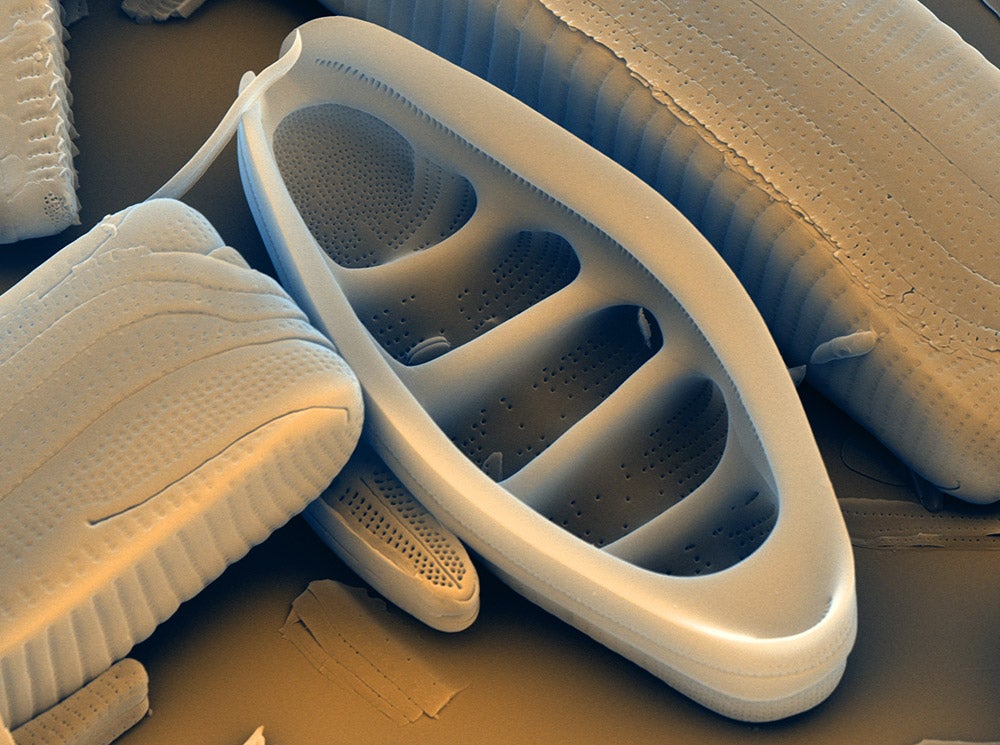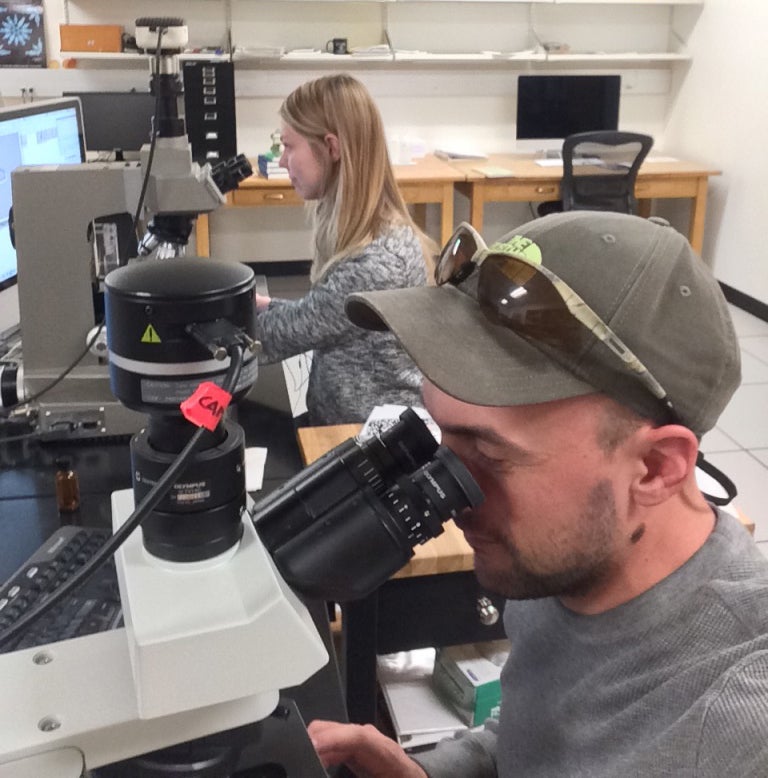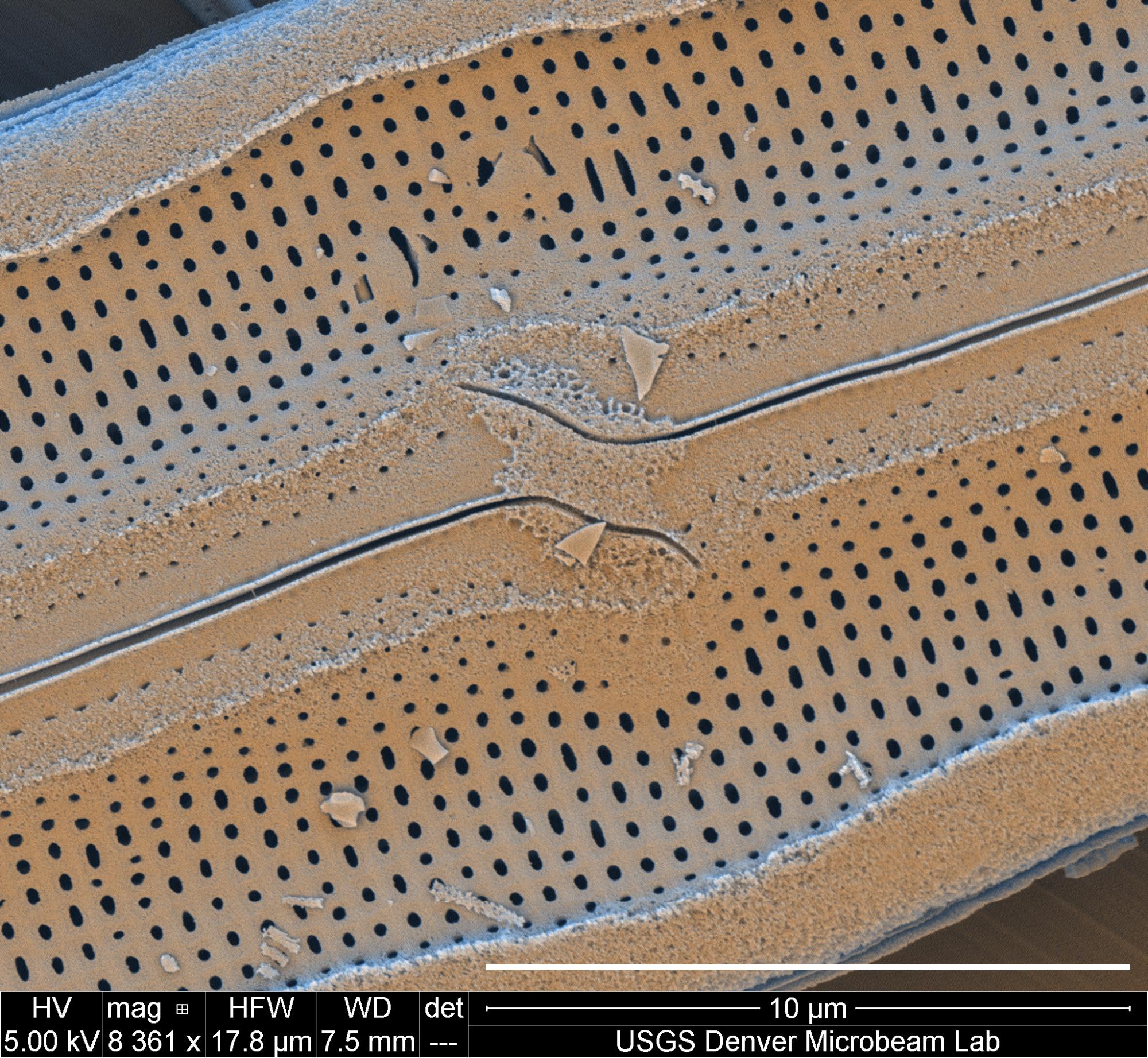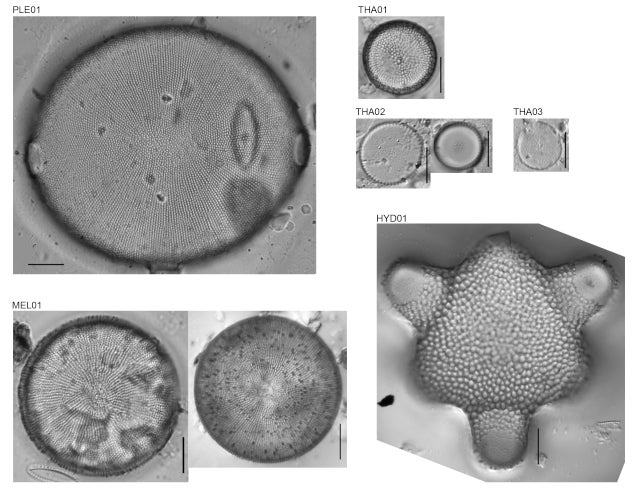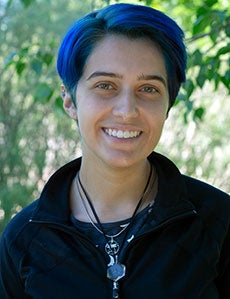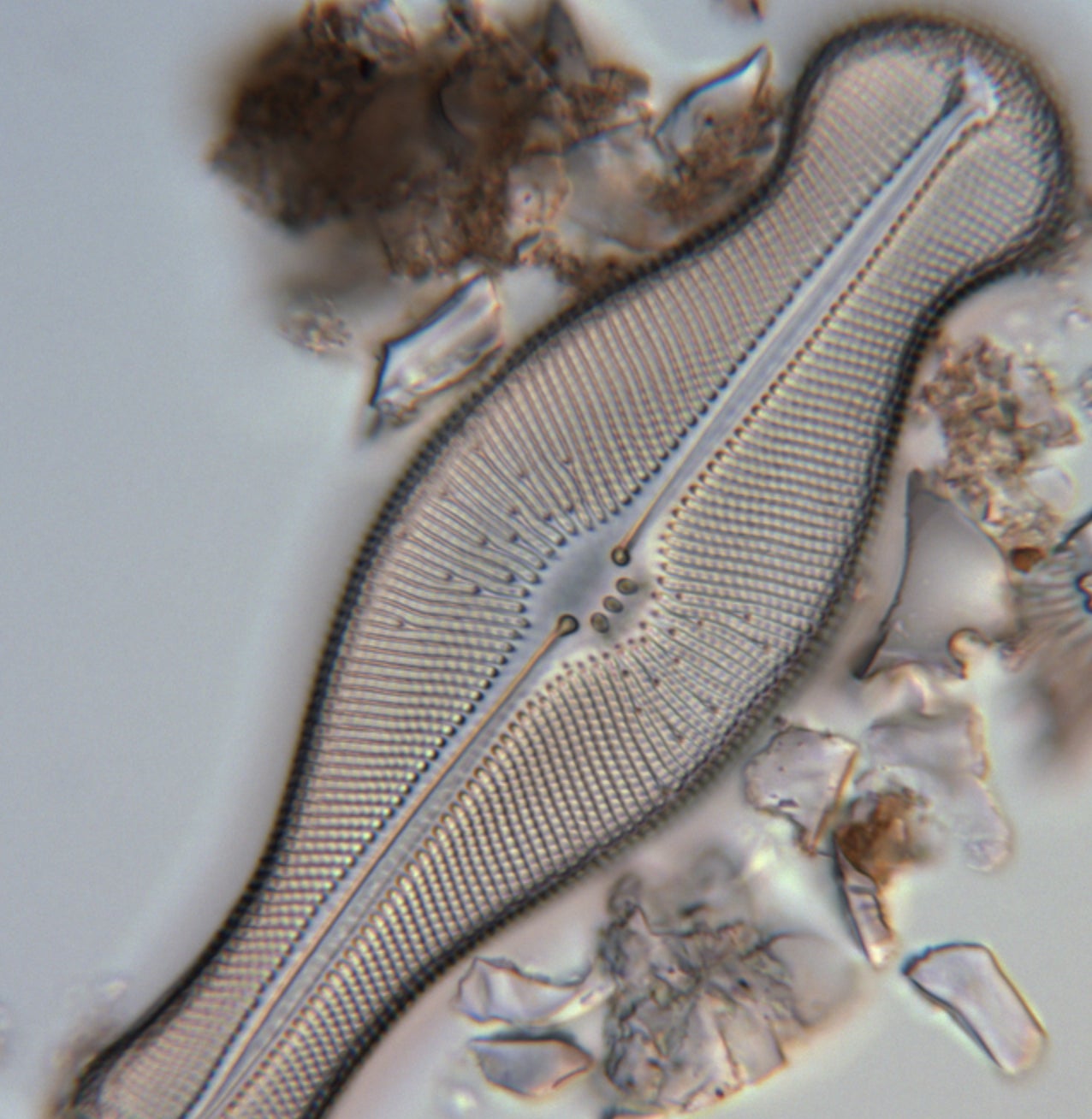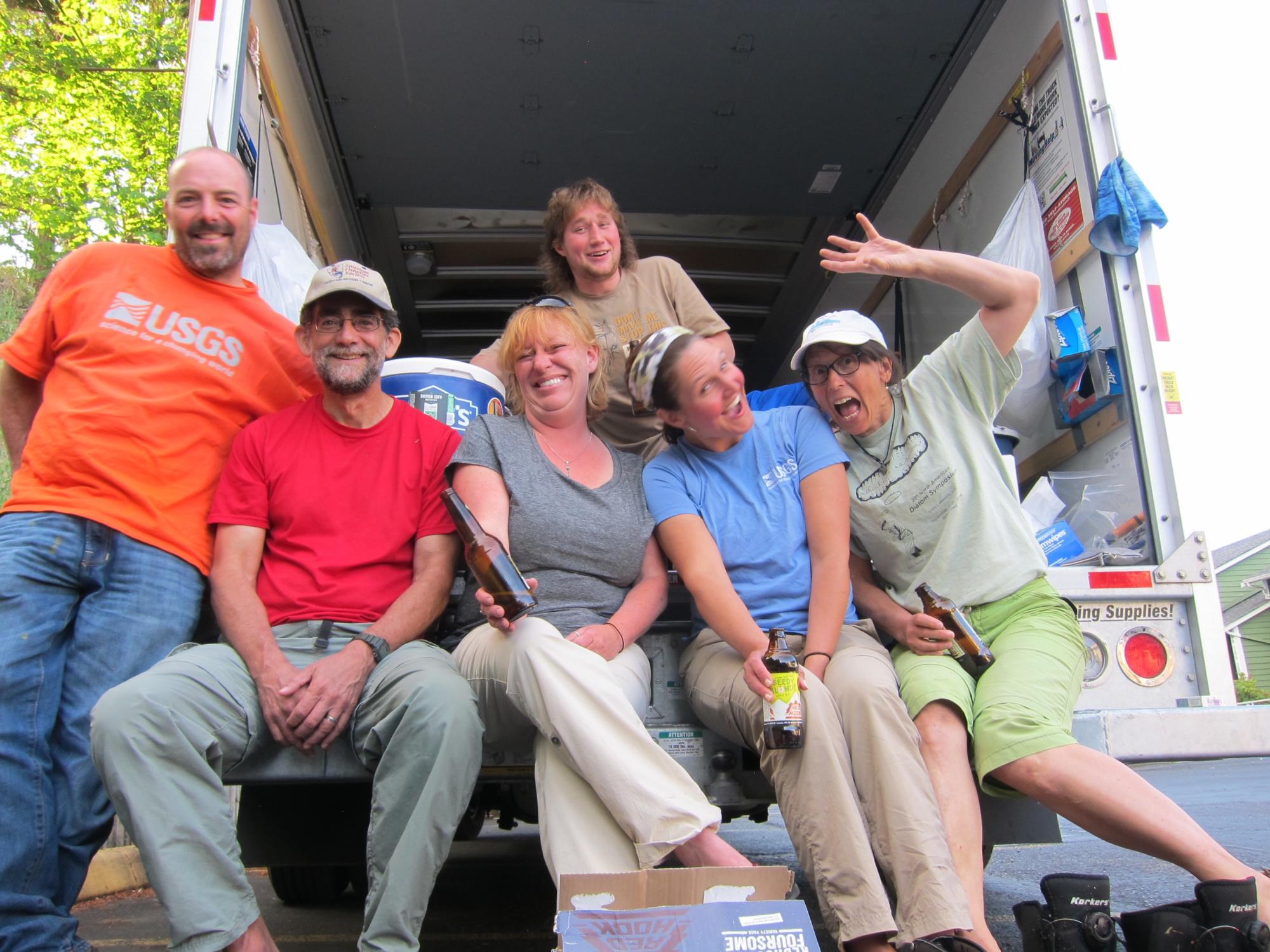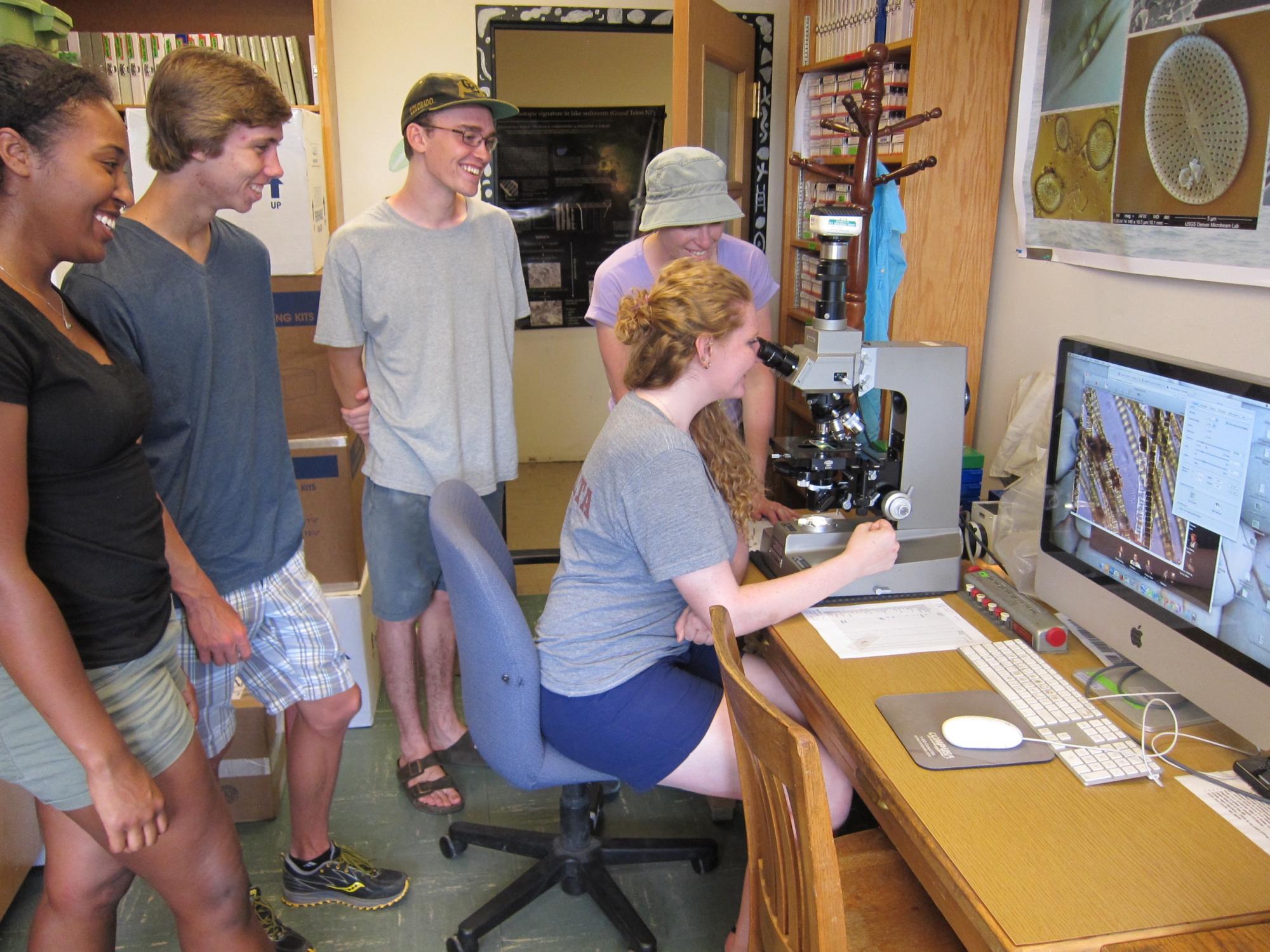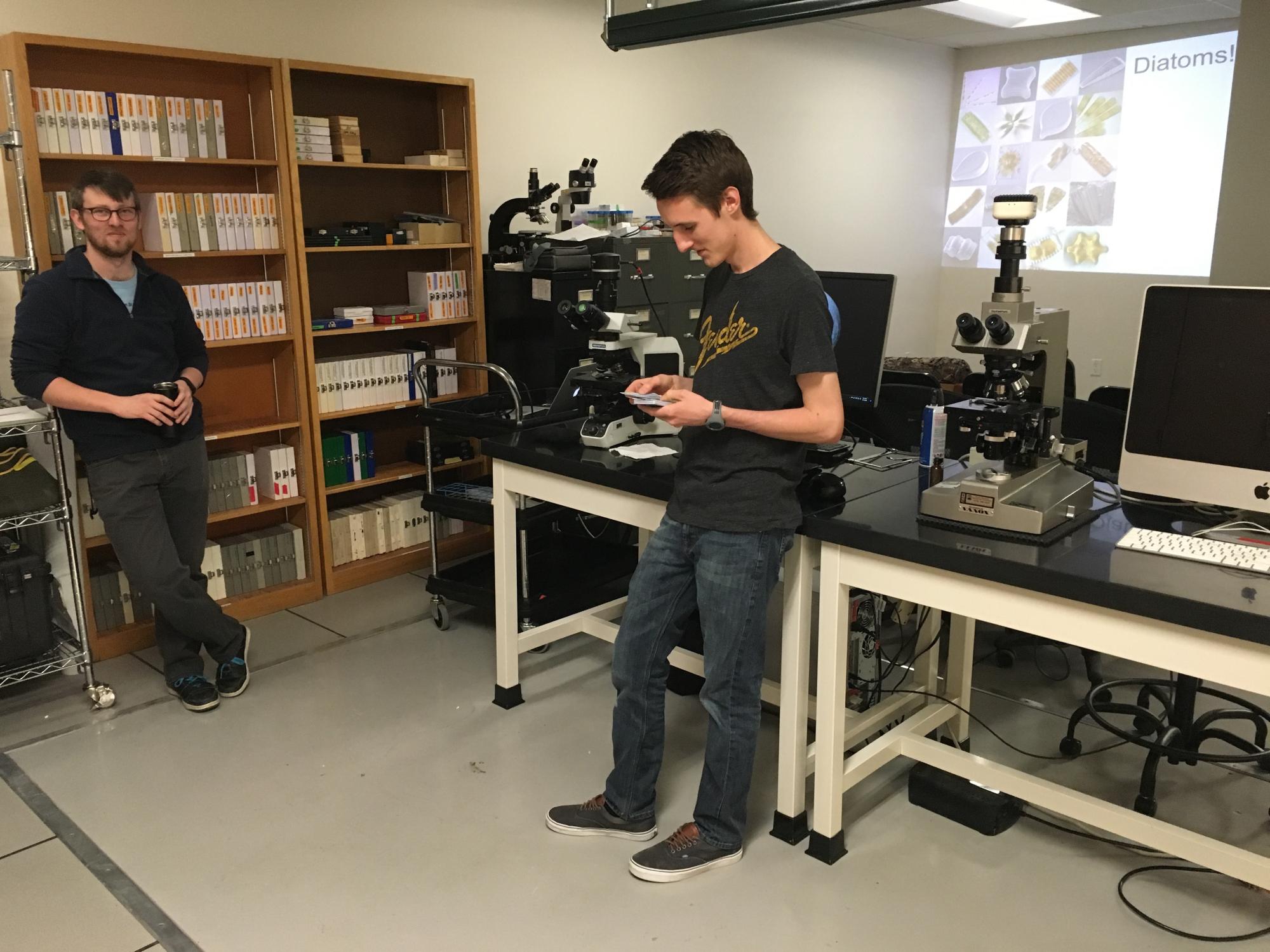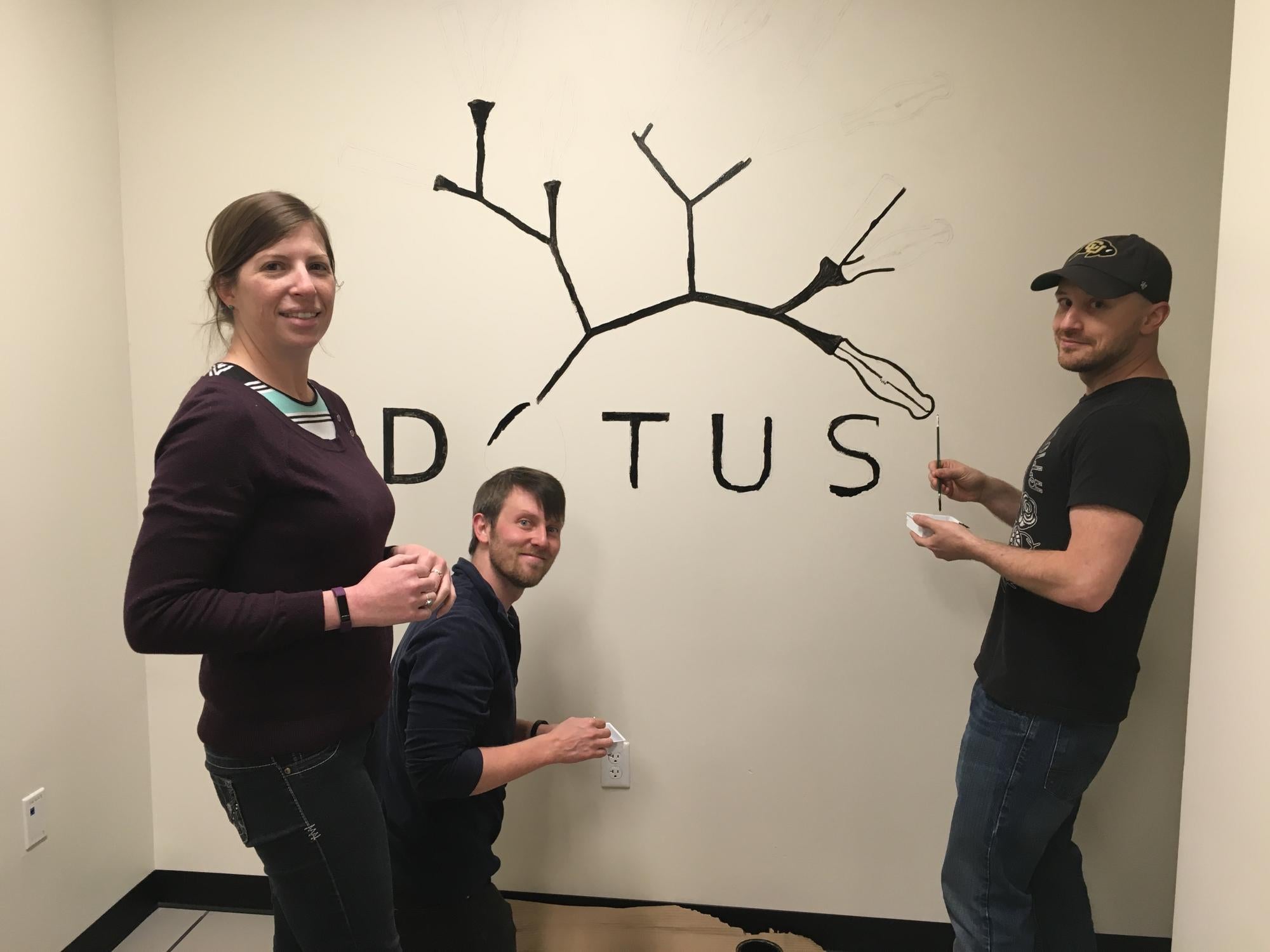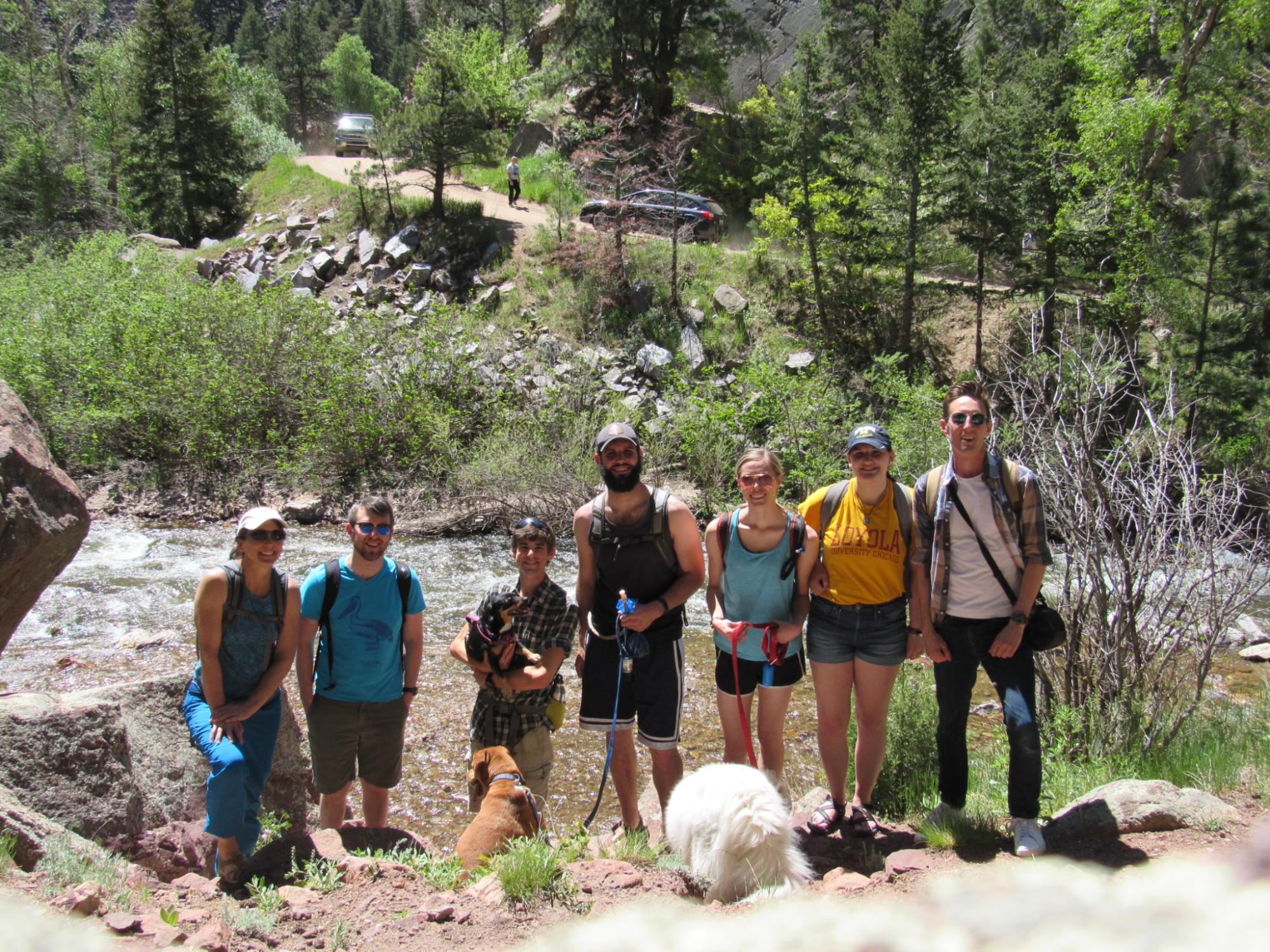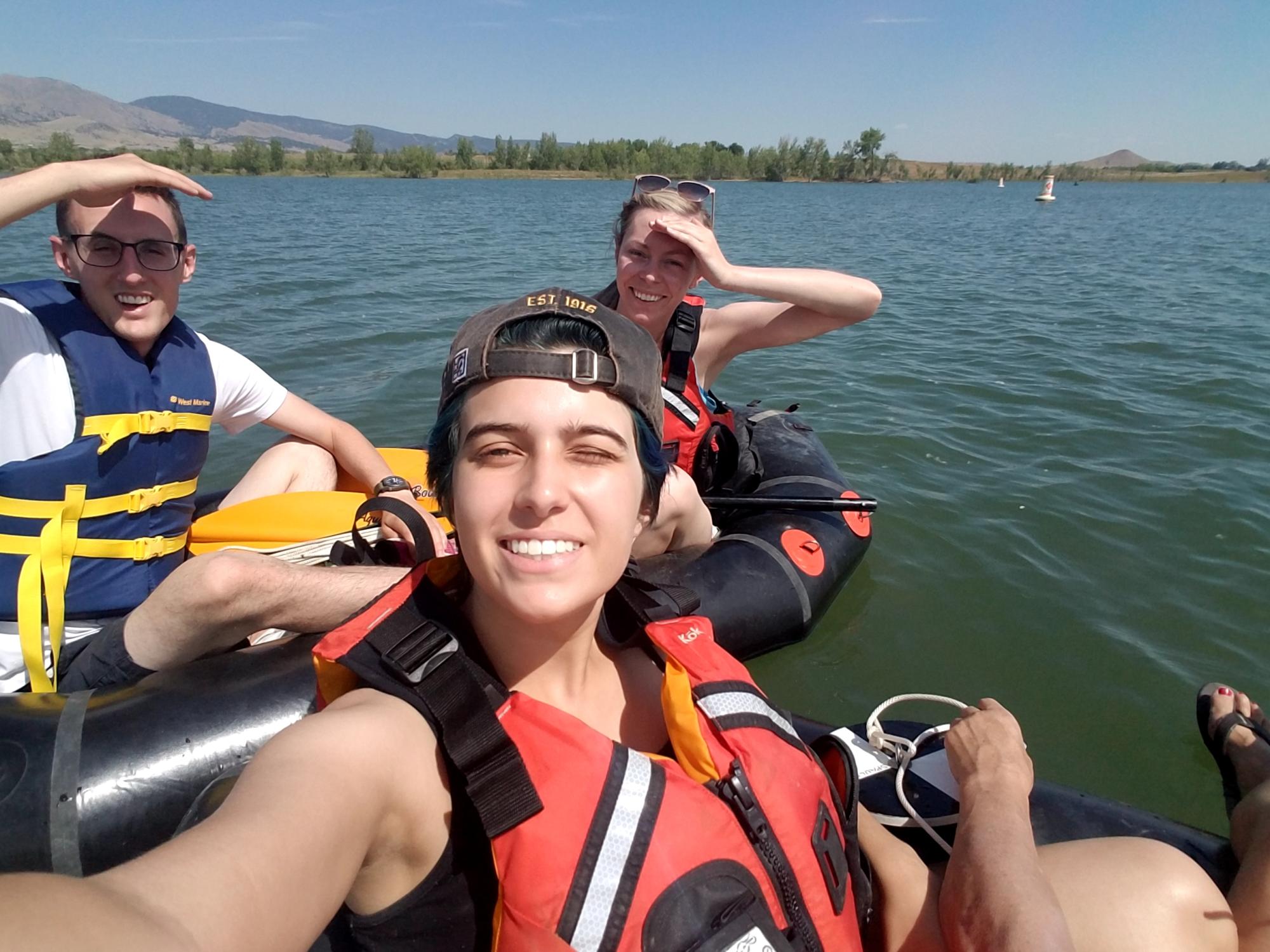Diatom Lab
We examine diatoms via research-grade microscopes. Our lab also houses several thousand glass microslides and archived material, primarily from arctic, alpine and Antarctic lakes and streams. Our work is directed toward understanding diatom biology, developing consistent approaches for aquatic assessment and the ecological roles of diatoms.
- Tanya Hannis, Undergraduate
- Leanna Jo Clarkson, Undergraduate
- Nick Schulte, Postdoctoral Scholar
- Josh Darling, MS, 2020
- Meredith Tyree, Professional Research Associate
- Cara Lauria, MS, 2018
- Tyler Kohler, PhD 2015
- Deena Garland, MS Graduate
- Aneliya Sakaeva, MS Graduate 2014
- Ian Bishop, Professional Research Assistant
- Zachary Little, Undergraduate, RESESS Program
- Gabriela Fernandez, Undergraduate, RESESS Program
- Alec Camp, Peace Corps Volunteer
Contact
Sarah Spaulding Phone: 303 492-5361 Lab phone: 303 492-5158 Lab room: SEEC S173
What are diatoms?
Diatoms are single-celled algae
Diatoms are algae that live in houses made of glass. They are the only organism on the planet with cell walls composed of transparent, opaline silica. Diatom cell walls are ornamented by intricate and striking patterns of silica.
Click to zoom
Projects
Become a diatom taxonomist, certified by the Society for Freshwater Science.
The Level 1 Diatom Taxonomic Certification indicates an up-to-date working knowledge of the diagnostic characteristics of accepted North American inland diatom genera, providing a practical base for proficiency in performing taxonomic identifications of inland diatoms at the genus level. This certification serves as the first step to certification at the species level.
The Society of Freshwater Science Taxonomic Certification Program was implemented to certify that trained and skilled people are providing aquatic identifications in North America. The Stroud Water Research Center currently administers the Taxonomic Certification Program for SFS. The successful completion of the taxonomic certification process results in a certificate of proficiency in performing taxonomic identifications of inland diatoms that stands for 3 years. The program also helps promote undergraduate and graduate training of new taxonomic experts, training of taxonomic technicians through workshops, development of new manuals for identifying aquatic invertebrates and algae, and taxonomic excellence in other disciplines and other parts of the world. Study materials are available here:
Our lab partners with the US Geological Survey to further the research of diatom autecology and taxonomy.
Click to zoom & see caption
We analyze samples of rivers and lakes from across the country to determine the biotic condition, based on diatoms. We have been working on regional studies of rivers in the southeast, northeast, Pacific northwest and California along urban and agricultural gradients. By identification of diatom species in rivers, we are able to determine the condition and impact of stressors to aquatic environments. Our work emphasizes the development of repeatable taxonomy across different analysts and laboratories.
Our lab is part of a collaborative project to document the diversity of diatom species in North America (diatoms.org).
Click to zoom & see caption
The project aims to provide accurate information on diatom identification, ecology, and geographic distribution. Identification of diatoms is crucial to measuring the biotic integrity of lakes and streams. Before the Diatoms of North America project, inconsistent taxonomy threatened accurate assessment of biotic condition. As a result of this project, diatom data has become both more consistent and more correct. Diatoms of North America has been developed in part with the generous funding and support of US EPA, USGS, the Institute of Arctic and Alpine Research at University of Colorado and other organizations.
In the past, there have been difficulties in merging data sets from different labs. In the INSTAAR Diatom Lab, we developed a process for verifying taxonomic decisions and comparing data from different sources.
Click to zoom & see caption
At the core, are “voucher floras”, which are image catalogs of diatoms organized into unique operational taxonomic units (OTUs), specific to regions or projects. The images within the flora represent the range of entities encountered in a project, because they are derived from each study rather than from a flora from some other geographic region. These floras help to document the size and morphological range of each diatom species, while allowing for transparency of the analysis process. When analysts are able to refer to OTUs and their morphological “meaning” through images that are project specific, data reproducibility is improved. Moreover, understanding of the size diminution series, or “morphological space” throughout a species’ life history for each taxon, is shared by analysts. A process for incorporating newly encountered taxa and sharing them is an important component of the process. The voucher floras are archived and made accessible so that future work to merge data sets is clear and straightforward.
2023 Lake Annie Voucher Flora (PDF)
2018 Northeast Lakes Voucher Flora Future Edition V2.0 (518MB zip)
2018 Northeast Lakes Voucher Flora Voucher Edition V1.0 (520MB zip)
2016 USGS Pacific Northwest Regional Survey River Voucher Flora (163MB zip)
2015 USGS Southeast Regional Survey River Voucher Flora (533MB zip)
2014 USGS Northeast Regional Survey River Voucher Flora (165MB zip)
Our lab recently completed a project with US EPA Region 1 and participating states (Maine, New Hampshire, Vermont, Connecticut, Rhode Island, New York and New Jersey).
The objective of the work was to analyze diatoms in surface sediments of 120 lakes and develop a regional diatom flora for use by states in their assessment programs. Meredith Tyree coordinated the work, including developing a consistent taxonomy and rigorous QA/QC protocol across three laboratories. The northeast lakes were extremely diverse, with nearly 1200 operational taxonomic units (OTUs) recognized and placed in a voucher flora. The project included a workshop at the Academy of Natural Sciences of Drexel University, in which students, taxonomists and ecologists used the resources of the herbarium to identify diatom species.
The late Miocene was a time of global cooling, trending toward the modern climatic regime of the present day.
Click to zoom & see caption
As global temperatures cooled, mid latitude terrestrial environments became increasingly more arid, resulting in a decrease in woodlands and the expansion of silica-rich grasslands. The early Miocene lacustrine diatom diversity greatly expanded, potentially in response to expansion of grasslands. Recent work suggests that the silica fraction of grasses, phytoliths, play an important role in the delivery of dissolved silica to freshwater lakes. However, these ideas require examination. In order to understand the connection of grasslands, diatom stratigraphic markers and climate, Gabriela Fernandez is examining a lacustrine diatomite core from the Ogallala Formation in Nebraska. Gabriela is an intern with the Research Experiences in Solid Earth Science for Students (RESESS http://resess.unavco.org/). She is examining the diatom record to reconstruct lake and environmental history in the grasslands of Nebraska during the late Miocene.
Within the past 25 years, Didymosphenia geminata, a large, freshwater, stalk-forming benthic diatom, has transformed from a rare taxon to a nuisance species, overwhelming nutrient-poor lotic systems in its native range in the Holarctic as well as new southern habitats, most notably in New Zealand, Chile and Argentina.
Much of the research regarding D. geminata and its emergent ecological role takes a rather limited view, focusing on solving the “problem” of blooming behavior and estimating the cause and extent of ecologic and economic impact. However, consideration of the life history, and in particular, population level growth dynamics and sexual reproduction, has received little attention. In fact, the life history of D. geminata and its role in the success of this species is largely unknown. In the past, studies of diatom life history have been based on small numbers of cells, because of the labor-intensive nature of measuring individual valves in the light microscope. Now, novel observational and analytical methods using the Fluid Imaging FlowCam allow us to gain new knowledge of this species, its size distribution dynamics, and diatom size dynamics more broadly.
The Diatoms of North America website (diatoms.org) is frequently updated with changes in taxonomy and concept. The previous versions are posted here:
- Gomphonema olivaceoides hutchinsoniana (prior to 5_17_2023) PDF
- Gomphoneis pseudookunoi (prior to 5_17_2023) PDF
- Achnanthidium kreigeri_(Prior_to_2021_09_01) PDF
- Pinnularia polyonca (prior_to_2021_08) PDF
- Diploneis marginstriata (prior_to_2021_03_12) PDF
- Surirella minuta (prior_to_2020_05_18) PDF
- Cymatopleura solea (prior_to_2020_05_18) PDF
- Rhopalodia musculus (prior_to_2020_05_14) PDF
- Rhopalodia gibba (prior_to_2020_05_14) PDF
- Rhopalodia gibberula (prior_to_2020_05_14) PDF
- Planothidium rostratum (prior_to_2020_05_15) PDF
- Planothidium dubium (prior_to_2020_05_15) PDF
- Nitzschia sinuata var. tabellaria (prior_to_2020_02_15) PDF
- Nitzschia sinuata (prior_to_2020_02_13) PDF
- Diploneis krammeri (prior to 2019_07_04) PDF
- Gomphoneis olivaceum (prior to 2019_07_15) PDF
- Fallacia tenera (prior to 2018_05_27) PDF
- Nitzschia inconspicua (prior to 2018) PDF
We take our research and our fun seriously!
Click to zoom.
The lab in the SEEC building needed to have art! Here, Rhea Esposito, Ian Bishop and Paul Bliznik make the Diatoms of the US logo a reality
Publications
Publications for Spaulding are shown below



